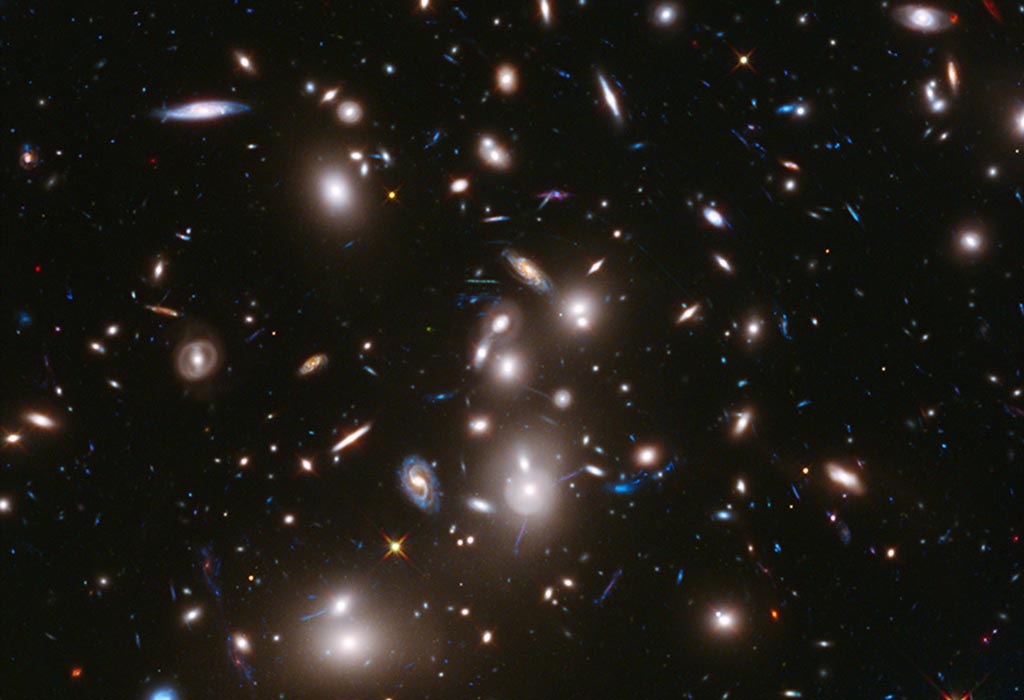Galaxy clustering
The depths of the universe hold uncountable numbers of galaxies—huge congregations of stars similar to our own Milky Way galaxy. We know these are not scattered at random. In some parts of the cosmos, galaxies crowd together in clusters and even superclusters. Elsewhere, the universe seems relatively empty of galaxies, creating voids which have been likened to soap bubbles.
The way in which galaxies cluster is affected by both the expansion of the universe, and the way that gravity interacts with dark energy. Examining the patterns of galaxy clusters, how they change over time and how they relate to patterns in the cosmic microwave background can provide insights into the fundamental structure of the universe.






